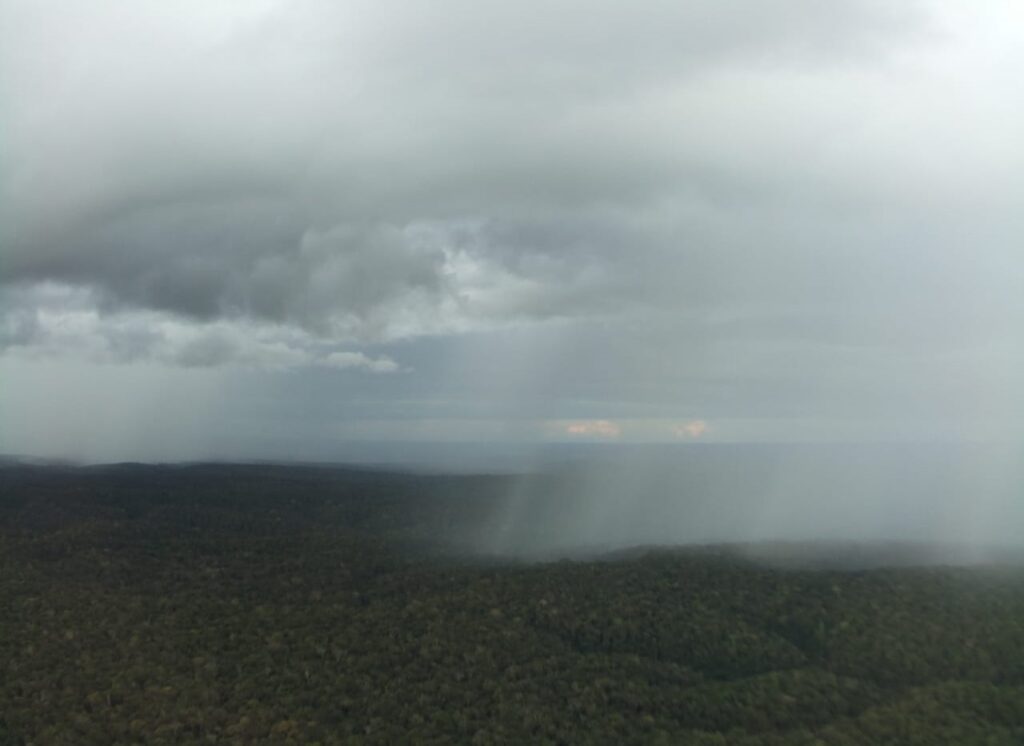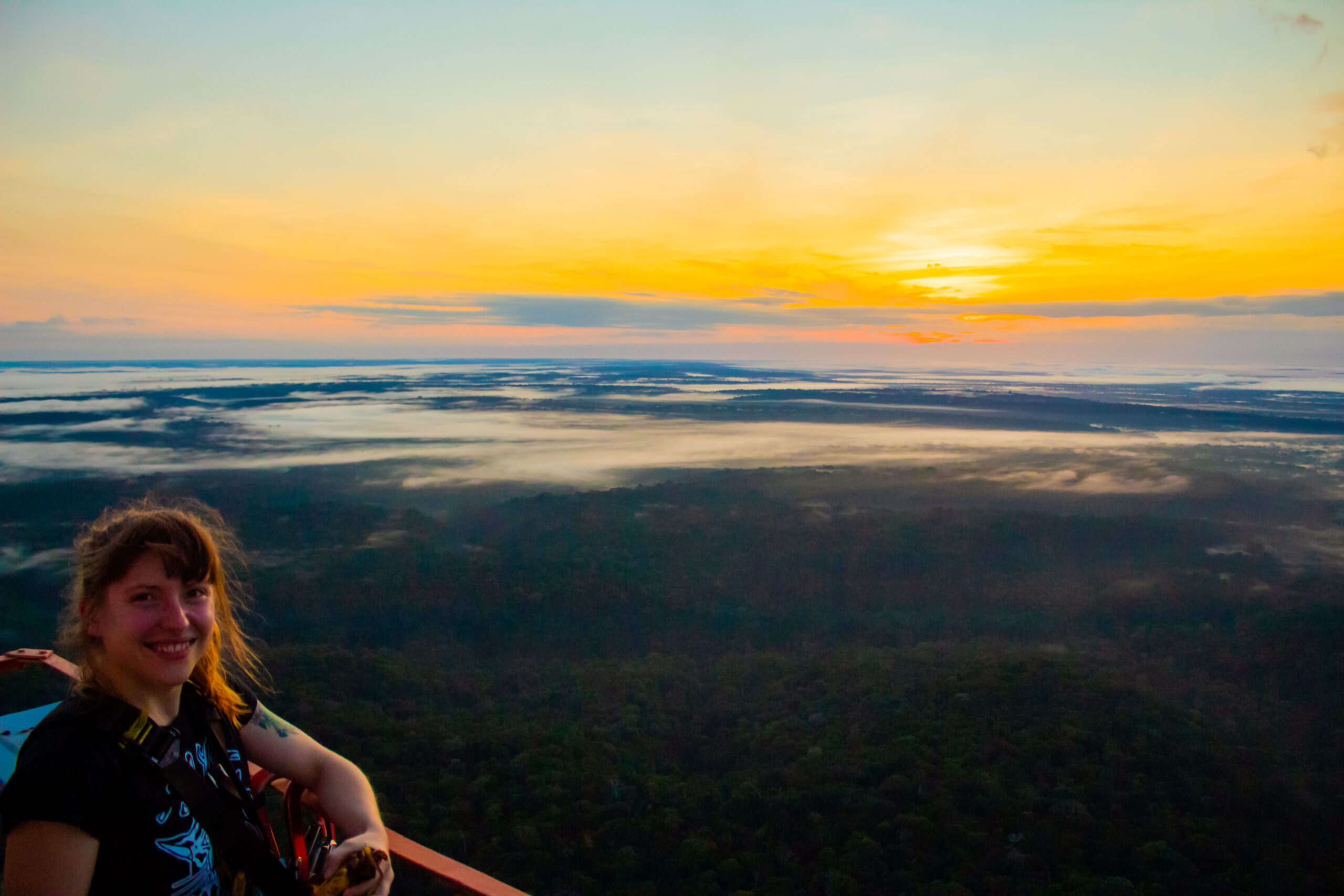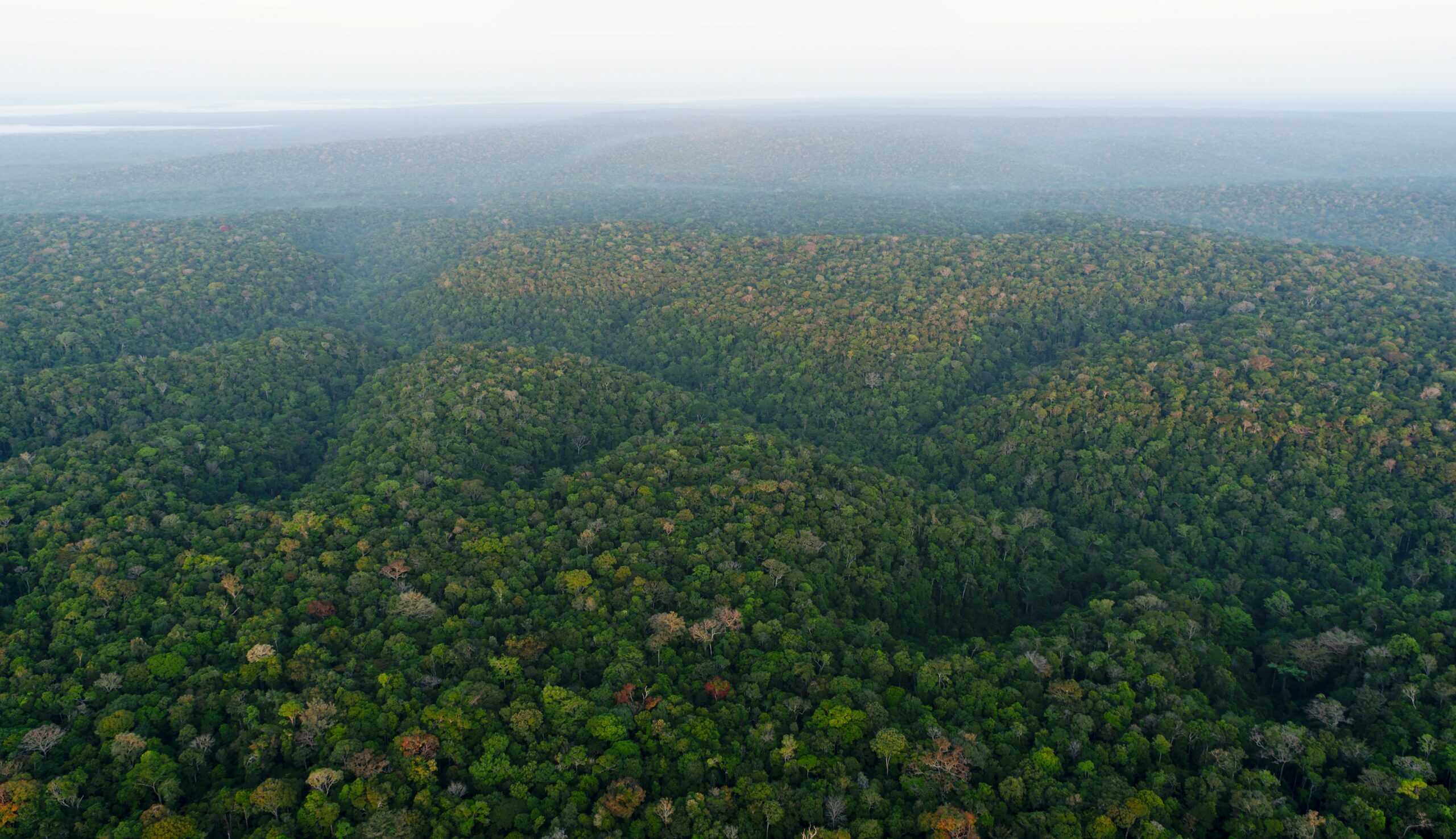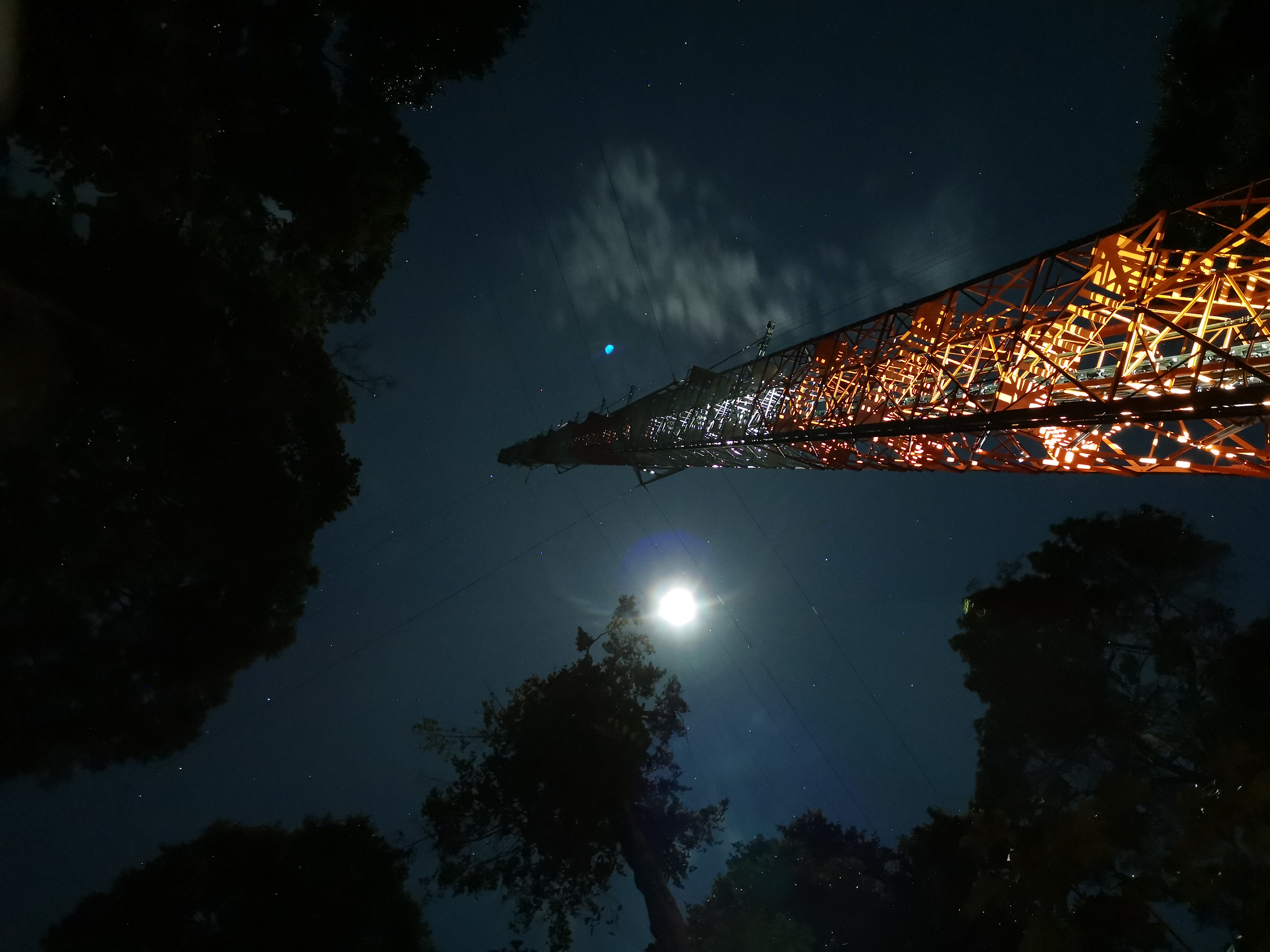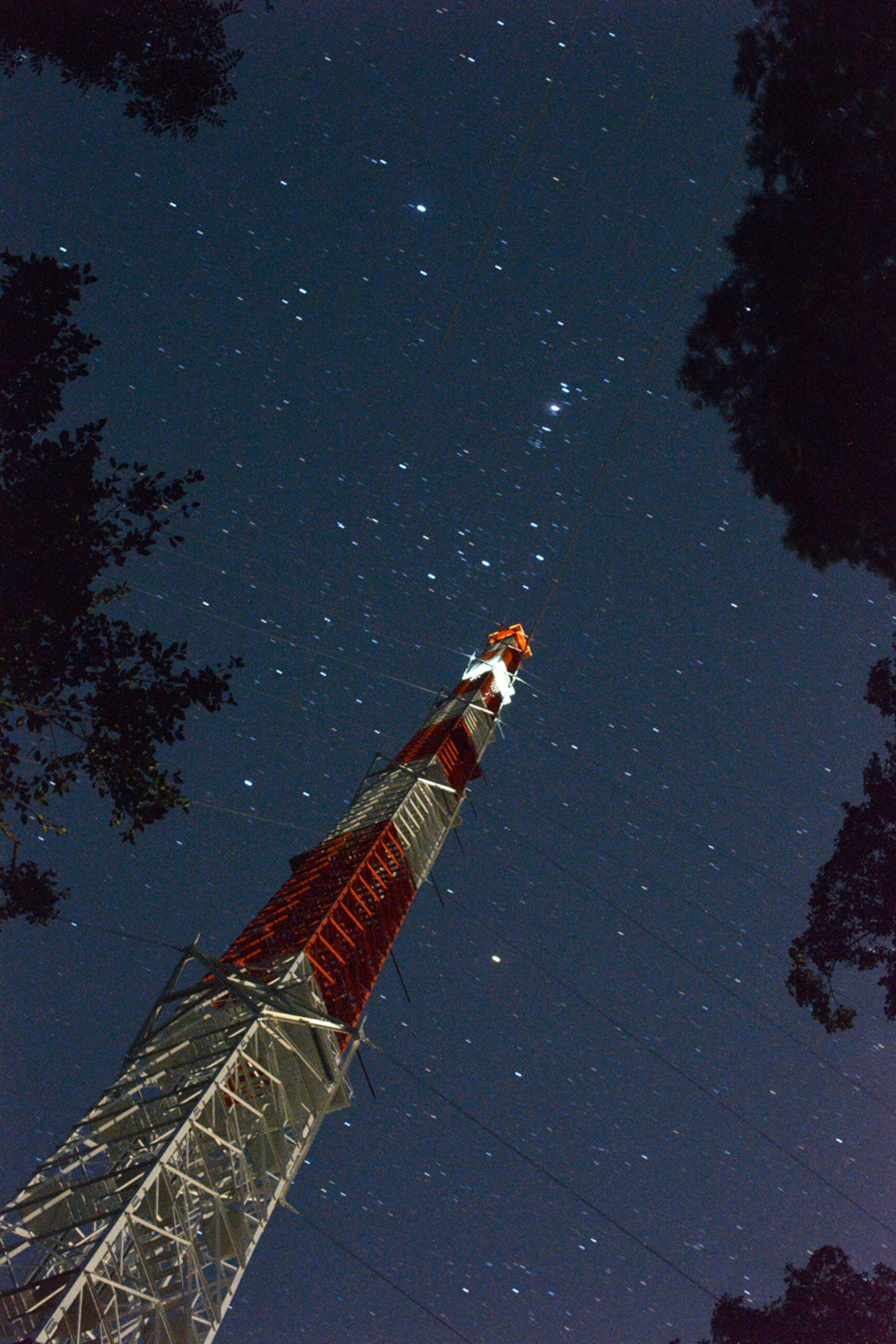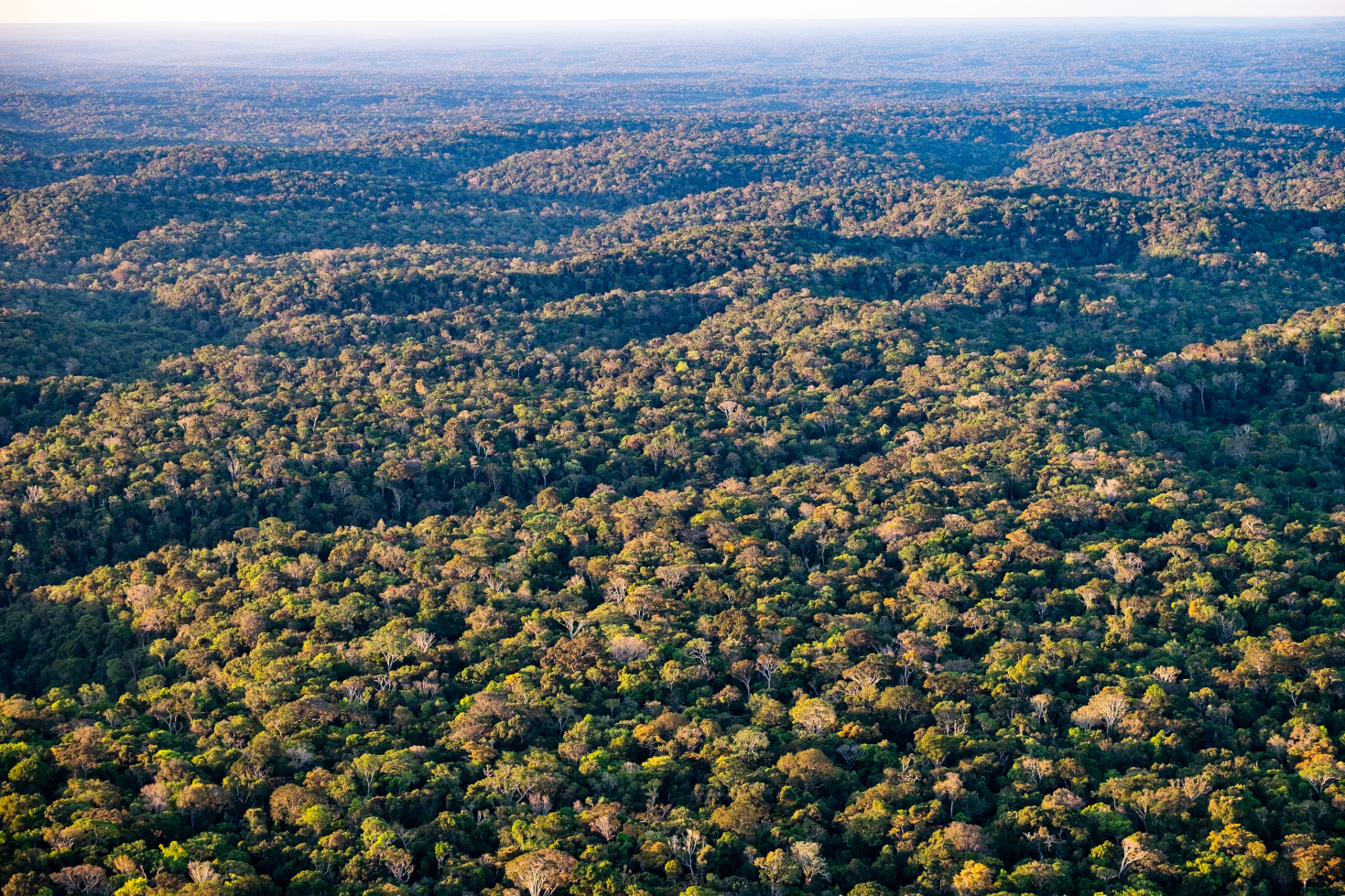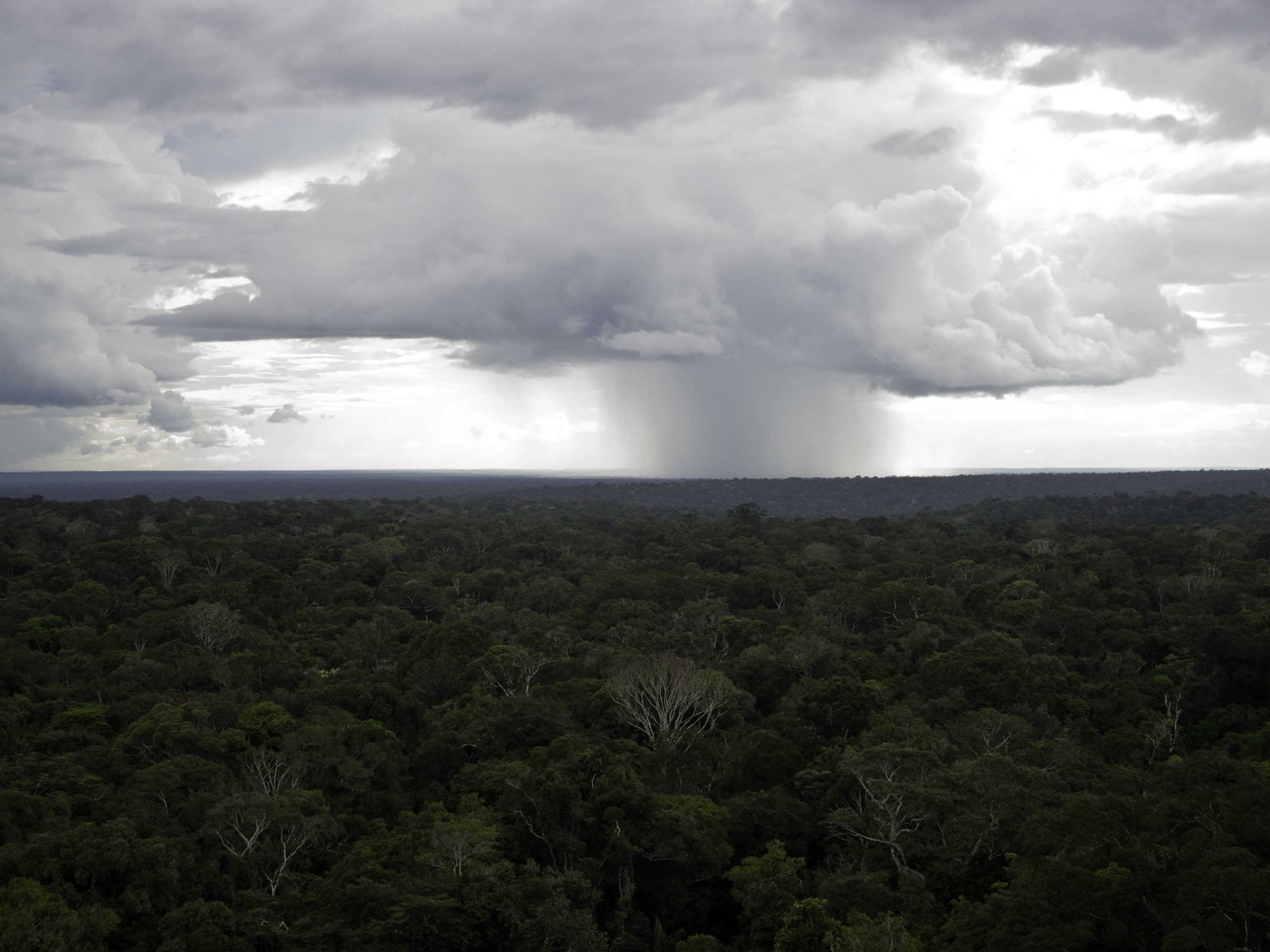Thunderstorms are common in the tropics, including the Amazon rainforest. They often produce downdrafts with extreme wind gusts that can cause widespread tree damage and mortality through defoliation, snapping and/or uprooting. But what role does the structure of the atmosphere play, and how does that change over time? In a new study, Anne Mendonça, Cléo Quaresma, Daniel Marra and their co-authors analyzed different turbulence regimes at the ZF2 site as part of the ATTO-INVENTA project. They also investigated how turbulence is connected to the occurrence of downdrafts and wind gusts.
At first, it is important to consider under what conditions the forest is coupled with the atmosphere. The exchange between the air within the forest and the air in the overlying atmosphere occurs only when turbulence provides continuous mixing. Without turbulence, the atmosphere might separate into distinct layers with hardly any exchange between to two, like oil and water that aren’t stirred to blend.
At night, the latter is often the case in the Amazon. However, convective storms with associated downdrafts occur even during the night. This is why the scientists focused on the nighttime hours in this study. They observed two contrasting regimes: the very stable regime and the weakly stable regime. The very stable regime is characterized by little to no turbulence and thus very little mixing. The weakly stable, on the other hand, leads to a much better coupling between the forest and the atmosphere due to continuous turbulence.
A threshold in wind speed marks the transition between the regimes. However, this threshold value is not always the same. Instead, it changes with height above the forest canopy, and also with season. Specifically, the wind speed threshold is higher in the dry season compared to the wet season. It is also higher at higher altitudes. In other words: During the dry season, higher wind speeds are required to shift to the weakly stable regime.
Additionally, the structure and roughness of the forest canopy play a role. Compared to other studies, the team found that lower wind speeds were required to cross the threshold from one regime to the other. The scientists concluded that this is due to the greater turbulent mixing for a given mean wind speed. This might be due to the rough surface of the Amazon Forest.
Anne Mendonça and her colleagues found that extreme winds-gusts associated with convective downdrafts often initiate the transition in the turbulence regime from very stable to weakly stable. Strong winds are then able to propagate into the forest canopy. There, they have the potential to cause tree damage and mortality.
Finally, they combined their data with data from another study that estimated critical wind speeds necessary to topple trees with local winching experiments and modeling. Their results indicate that downdrafts in the wet season may cause severe damage. The team identified wind speeds up to 15 m/s in the wet season. In the dry season, wind speeds only reached 7.5 m/s. In the wet season, these winds propagated during downdrafts had a destructive potential approximately four times higher than on nights without downdrafts. However, winds exceeding the critical wind speed do not necessarily result in tree damage and mortality. Further studies are needed to describe the frequency of such gusts and the relationship between speed and disturbance severity.
Mendonça et al. published the study “Turbulence regimes in the nocturnal roughness sublayer: Interaction with deep convection and tree mortality in the Amazon” in Agricultural and Forest Meteorology. It is published Closed Access but available under this link for 50 days upon publication.
Similar articles
Direct measurements of OH radicals are rare and difficult to achieve. However, since they react with BVOCs, Ringsdorf et al. inferred them from isoprene measurements at ATTO. To do so, they applied a technique called ‘Dynamical Time Warping’ from the field of speech recognition. Akima Ringsdorf et al. published the study “Inferring the diurnal variability of OH radical concentrations over the Amazon from BVOC measurements” Open Access in Nature Scientific Reports.
In a new study, Luca Mortarini and his colleagues introduce a novel approach to the study of the roughness sublayer, using a cospectral budget model. Its originality lies in not considering the mixing layer analogy to parameterize the turbulence statistics. In addition, it relates them to the different scales of the wind velocity spectrum without making any assumption on the property of the flow.
Eiky Moraes, Cléo Dias-Júnior and their colleagues wanted to find out if the local topography at the ATTO influenced the atmospheric movements. In particular, they were interested in the effect that topography has on the formation of gravity waves. Comparing two simulations, one with and one without topography, revealed some important differences in the dynamics and chemistry of the atmosphere.
Only when the air inside of the forest canopy mixes with the air above can there be exchange. The physical movement of the air, its turbulence, determine how well these two layers of air, the one inside the forest canopy and the one above, mix. Daniela Cava, Luca Mortarini, Cleo Quaresma and their colleagues set out to address some of these questions with two new studies that they conducted at ATTO. They wanted to define the different regimes of atmospheric turbulence or stability (Part 1) and describe the spatial and temporal scales of turbulent structures (Part 2).
Polari Corrêa and his co-authors analyzed the atmospheric dynamics in and above the forest canopy during one particular night at ATTO. Those conditions changed throughout the night. Turbulence was followed by the formation of a gravity wave and a low-level jet. It was likely formed due to the breeze from the Uatumã River and the hilly terrain. The study highlights the complex dynamics and mechanisms in the atmosphere above a dense forest.
Chamecki and his co-authors analyzed if the gentle topography underneath the Amazon rainforest impacts atmospheric turbulence. They published their results Open Access in the Journal of the Atmospheric Science.
Convective storms often occur in the tropics and have the potential to disturb the lower part of the atmosphere. They might even improve the venting of trace gases out of the forest canopy into the atmosphere above. To better understand these processes, Maurício Oliveira and co-authors used the infrastructure at ATTO to study storm outflows during nighttime. They published the results in a new paper in the Open Access Journal Atmospheric Chemistry and Physics.
The Amazon rainforest interacts with the atmosphere by exchanging many substances. Many of these, such as carbon dioxide, methane, ozone, and organic compounds, are produced by the vegetation. They are very influential in both the regional and global climates. Until now, the estimates of their emission and absorption rates are based on classical theories. But those were developed over relatively short vegetation and are valid for the so-called “inertial sublayer.”
Aquino et al. published a new study in Agricultural and Forest Meteorology about the characteristics of turbulence within the forest canopy at two Amazonian sites. They found that the air layer close to ground is largly decouples from the air layer in the upper canopy and above.


